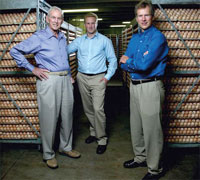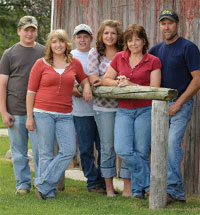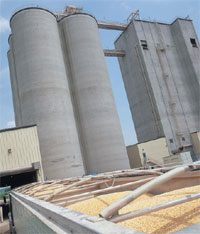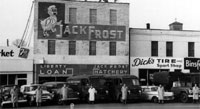



Creating a Win-Win Situation for All
Started in 1926 by E.M. Helgeson as a small hatchery selling day-old chicks to Minnesota farmers, Gold'n Plump Poultry has grown to become the largest fully integrated chicken producer in the upper Midwest of the USA. Clark Baird reports on his visit to some of the people on Gold’n Plump’s live production side of the business in the latest issue of Cobb Focus.What became clear to me is that ‘partnerships’ have been important throughout Gold’n Plump’s history and a basis from which the company has built its success. Today, this philosophy and success validates itself in the close, long-term relationships Gold’n Plump has built with their growers, suppliers like Cobb- Vantress, and consumers in the form of strong brand awareness and trust.
Product quality starts with growers

Don Helgeson, second generation and E.M. Helgeson’s son, recognized early on that the growers were the ‘bread and butter’ of the company. He said that successful partnerships meant a ‘win – win’ for both parties and loyalty could be built with growers by treating them right.
Because of this, he developed a grower contract that is unique to the industry, and one that gives growers a steady cash flow while at the same time the opportunity to invest in their futures. Gold’n Plump sees them as partners: it gives time, resources and significant financial support to develop and service growers and provide them with the necessary tools to successfully raise healthy chickens.
According to Bill Lanners, Director of Live Operations for Gold’n Plump, the company provides support that is critical to the quality of their products and that starts with raising chickens right.
“A healthy chicken is a wholesome chicken and a better product to meet the needs of consumers and customers. We want growers to concentrate on the care of our chickens and not worry about the basics,” he said. The company pays for inputs such as sanitation supplies, heat, electricity, bedding, feed and chicks. This allows growers to concentrate on animal care and not feel the need to cut costs on important aspects of the process in order to make a living.
In addition to a guaranteed monthly income whether there are chickens in the barns or not, the company has field service representatives that make visits to farms an average of twice per week. Each representative is responsible for about 20 to 25 barns.
“We’ve seen great success with this model, which is proven in the number of years growers stay with our company,” said Bill Lanners. For example, the average grower has been working with Gold’n Plump for over 20 years in Minnesota and 13 years in Wisconsin.


Most of the farms are small, diversified family operations, several who have passed the tradition of raising chickens for Gold’n Plump on to two, three and even four generations. Most farms have only one house with an average bird placement of around 50,000. Gold’n Plump has found this model to be successful, because the time required is limited to a few hours a day, focusing attention on what needs to be done.
Mutually beneficial long-term relationships with suppliers
In addition to supporting rural communities with grower partners, Gold’n Plump Poultry has also built long-standing partnerships with area farmers for corn supplies. With more than half of the chickens’ diet being corn, annual corn purchases are significant.
“We’re just as happy to work with a small corn farmer as a large one – in fact, many of our growers with barns also grow the corn we purchase. It’s a great example of a sustainable business model in which we help keep the farmer in the business he wants to be in. It also means a lot to keep the dollars in our local communities.”
Gold’n Plump extends this same ‘partnership’ philosophy to its suppliers. Examples of long-term partnerships include feed ingredients suppliers (one for more than 40 years), barn construction (more than 35 years), distribution materials and handling equipment (20 years) and labels (21 years).
“This helps us better predict and control our processes, while at the same time minimise variation and increase quality in our end products,” said Lexann Pryd-Kakuk, Corporate Relations Manager for Gold’n Plump.
“And that’s the type of support we’ve come to value from suppliers like Cobb- Vantress. They provide our live production people with the data and technical support they need in order to make good business decisions and present learning opportunities through roundtables and workshops.


We also rely on them to give us good recommendations, and they do that.”
This philosophy has appeared to pay off. In a 2010 consumer study conducted in Minneapolis and St. Paul - the company's core market - 95 per cent of respondents said Gold'n Plump was their brand of choice.
The company has also seen increased demand for a new, growing line of branded products called ‘Just BARE® Chicken’. Introduced in late 2008, chickens for this brand are vegetable-fed and raised on a small number of family farms in central Minnesota.
Clear, leak-proof packages of Just BARE provide a near-360 degree view of the hand-trimmed product inside the package. Each package also contains a ‘traceability code’ that consumers can enter on the brand’s web site to learn more about the specific family farm where the chicken inside the package was raised.
According to Lexann Pryd-Kakuk, a company’s image no longer stops at the quality of its products or with the resonance of its marketing messages. Consumers want to know that when they peel back the outer layers of a company, they find values similar to their own.
“I can honestly say that we won’t do business with suppliers who don’t hold the same values as we do, because we’re entering into relationships with the longterm in mind. We realize that our partnerships directly impact the quality promise we make to our customers and consumers, and partners like Cobb-Vantress demonstrate what we look for when making supplier decisions.”








